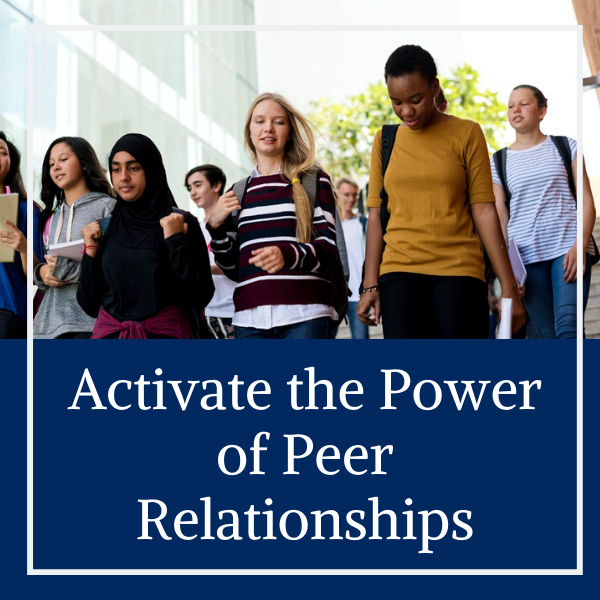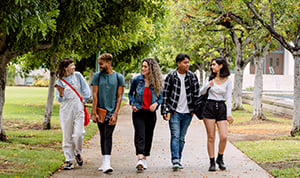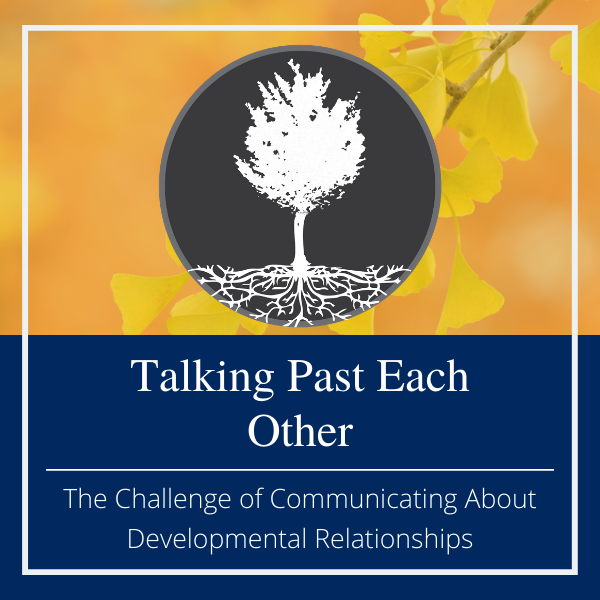By Terri Sullivan, Ed.D., Search Institute’s Director of Applied Qualitative Research & Community Mobilization
Peers are necessities, not luxuries in human development.” (Hartup, 2009, p. 3)
We know intuitively, and research affirms, that peer relationships play powerful roles in young people’s lives. Research points unequivocally to positive peer relationships as critical resources for youth development, including academic motivation and learning, reduced stress, reduced risky behaviors, and positive identity development. Through these relationships, young people also develop empathy, care, social trust, and a commitment to the common good.
Schools and youth programs provide potentially powerful settings for youth to form peer relationships. And yet educators and other youth development professionals may be less confident in their ability to manage peer relationships, compared to instruction, classroom management, or program delivery. And they may or may not see promoting positive peer relationships as central to their jobs. With social and emotional learning (SEL) increasingly highlighted as a critical aspect of human development, in-school and out-of-school youth programs recognize the need to catalyze and support positive relationships among peers. And yet how to do this is often left up to individual educators and other youth development practitioners to figure out.
In a recent study of exemplary youth development practitioners in a variety of settings, with diverse participants, six principles emerged to promote positive relationships among peers. They are:
- Create Safe Space
- Nurture a Community Mindset
- Facilitate Relationship Building Activities
- Pair Collective Action and Reflection
- Structure Opportunities for Shared Decision-making
- Build Developmental Relationships with All Youth
Below, I share a few specific ideas shared by practitioners in our study.
1. Create Safe Space
To ensure emotional safety among groups of young people exemplary practitioners facilitated the shared development and reinforcement of norms, including acceptance, confidentiality, and learning from mistakes. Youth said it was important not to be shamed for not knowing, sharing, or doing something. A practitioner said “you let people go to whatever sharing they want to. You don’t really force it.” All of this happened through specific activities to develop shared norms, and also through everyday interactions within and between activities. Practitioners also promoted emotional safety by recognizing and addressing conflicts early, before they grew to less manageable proportions.
2. Nurture a Community Mindset
Creating a safe space was the foundation upon which practitioners promoted a community mindset. They modeled and nurtured in others values of interdependence, inclusion, equity, and collaboration. For example, one youth participant said, “[The program leaders] show us how to do things as a group . . . And they taught me how to get people involved, cause there’s always some people who don’t really wanna get in there and . . . just go with the group.”
They promoted inclusion by “finding those people that aren’t being included and really drawing those people out.” Youth said they appreciated leaders who “mix up guys and girls,” don’t enable cliques and don’t “play favorites.” They promoted equity among youth group members by holding them accountable for doing their fair share of the work and making sure they got their fair share of opportunities. They recognized that one person’s “fair share” was not necessarily the same as that of another.
3. Facilitate Relationship Building Activities
Exemplary practitioners in our study balanced structured relationship-building activities with free time that allowed youth to hang out informally. They tended to include more structured activities early in the program, setting youth up to be more comfortable at building relationships informally during unstructured time. They mastered the art of reading the group and adjusting their use of structured activities accordingly. One said, “I’m not gonna be like, ‘Let’s sit down and do the iceberg of diversity’ when [youth are] already talking about things much more intense than that.”
In addition to stand-alone activities and games, leaders found ways to “create situations where it’s natural for [youth participants] to work with new people.” They rotated jobs and other roles, intentionally pairing more and less experienced and/or more and less confident youth and, “making sure that people work with everyone instead of staying in an exclusive group.”
4. Pair Collective Action and Reflection
Youth can tire of too much self-reflection and “get-to-know-you” activities. Most often, youth in this study came to the program to do something in particular beyond building relationships. In this study, that something ranged from white water rafting, to community service projects, to nature conservation, to social justice advocacy. Much of the relationship-building happened within those activities. The key to success was learning through shared action and reflection. This helped the group collectively recognize and build upon what they learned about each other, about themselves, and about working as a team through a particular activity. They also learned to facilitate group problem-solving.
5. Structure Opportunities for Shared Leadership and Decision-making
Exemplary practitioners in this study structured opportunities for youth to lead, make decisions, and solve problems together. They shared decision-making in ways that were appropriate to the risk level. They gave youth options, allowing them to vote. They put youth collectively in charge of a specific aspect of the program, such as taking care of program equipment. Related to creating safe space, practitioners commonly facilitated a process through which the youth created shared norms or rules they would abide by in their interactions with each other. They also provided opportunities for youth to take the lead to plan and implement specific activities together, from a party or camping trip to service projects, conference presentations, and social justice advocacy campaigns. They modeled processes for collaboratively solving problems as they arose. And when practitioners felt they needed to make a decision for the group, they did so transparently.
While some youth were overwhelmed at first by decision-making, leaders saw youth grow into the added responsibility. “They’re very vocal,” a leader said. “That’s changed because they’ve been given a forum now to speak up, where their opinion and their idea of something is respected.”
6. Build Developmental Relationships
Practitioners in this study modeled the positive relationships they wanted youth to build with each other. Their interactions paralleled elements of what Search Institute calls “developmental relationships,” through which young people discover who they are, develop abilities to shape their own lives, and learn how to engage with and contribute to the world around them. Recent research by Search identified five critical elements of developmental relationships: Express Care, Challenge Growth, Provide Support, Share Power, and Expand Possibilities.
Adult leaders who build developmental relationships with all youth in the program can promote each individual’s sense of safety, trust, and confidence. We hypothesize that when youth experience this kind of relationship with their leaders, they are more likely to have the motivation, confidence, and skills they need to build positive relationships with each other.
So What? Now What?
Based on the research outlined here, we hypothesize that living into these six principles will enhance peer relationship outcomes experienced by youth program participants. A next step for Search Institute will be to test this evidence-based hypothesis through ongoing mixed methods research. Should organizations and practitioners wait for further evidence before applying these principles? The ideas presented here are based on research with six youth programs.* We recommend the following steps to consider whether and how these principles might be operationalized in your setting. Our aim at Search Institute is to partner and learn alongside organizations interested in such a process.
- Share this blog with organization leaders and staff.
- Gather organization leaders and staff to consider the ideas that emerged across these six programs and reflect on ways in which the principles do and don’t fit with learning from their own experience.
- Work together to develop goals and strategies for living into principles that make sense in your own setting, including informal strategies to continually evaluate, refine, and replicate strategies that work.
- Document learning from these early efforts (evaluating both strategies and outcomes) to inform ongoing efforts to continually hone and adapt strategies to activate the power of positive peer relationships.
We look forward to working together with partners to continue to build and apply new learning to activate the power of peer relationships to promote positive outcomes for youth. We will keep you apprised of new learning and resources as they evolve.
* The effectiveness principles are based on learning from a qualitative study of exemplary youth program leaders, in diverse school and out-of-school settings. The data include: (a) a study of racially and socioeconomically diverse youth in four geographically diverse school-based programs that focus on building positive peer relationships (11 youth focus groups and 14 leader interviews); (b) a study of exemplary crew leaders working with diverse groups of youth in local, state and national park sites across the U.S. in a conservation leadership program (10 youth focus groups and 9 leader interviews); (c) a study of promising practices from an exemplary summer camp in the pacific northwest (3 youth focus groups and 3 leader interviews).






